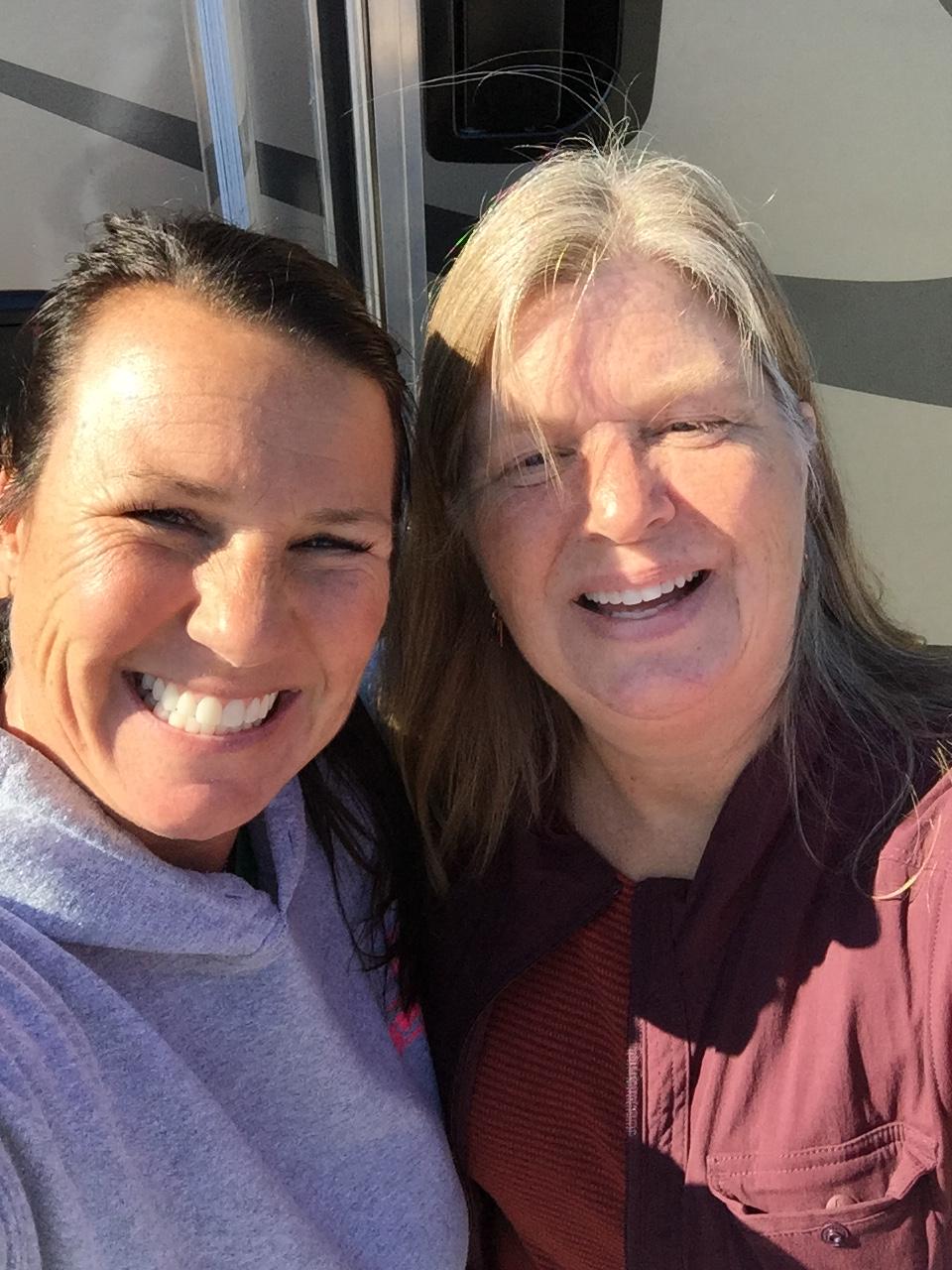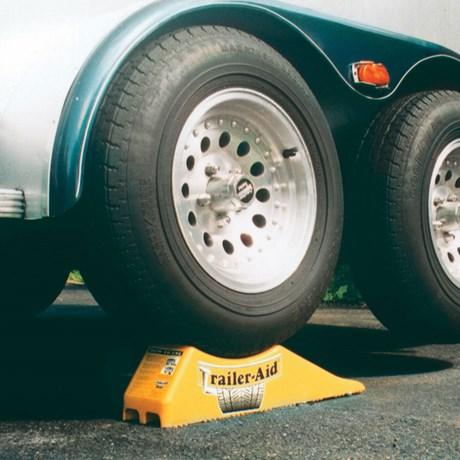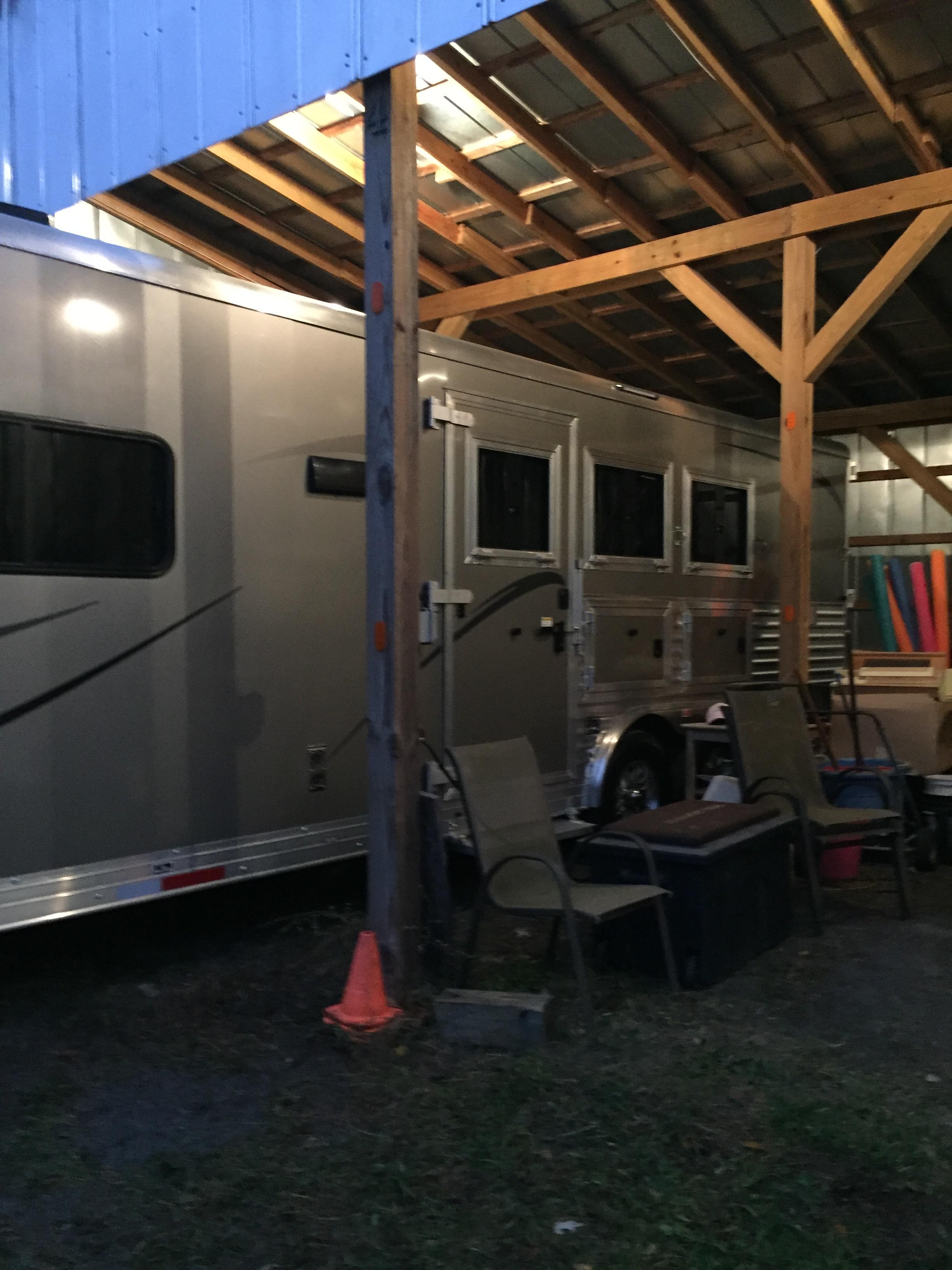
Tom’s Trailering Tips: 20 Rules of the Road For Hauling Horses
Have wheels, will travel: Esther Roberts shares her wise grandfather’s trailering tips that every equestrian should master before they hitch the trailer and hit the road with their horses.
Owning a horse trailer, for me, meant keeping a covenant I made to my first horse, Sam. My hometown is at the base of a mountain festooned with the ribbon of road known as Interstate 40. One day, a tanker carrying bromine gas wrecked on the interstate. Bromine gas is heavier than air. The entire valley filled up with acrid, orange fumes. The National Guard was called in and everyone was forced to evacuate. I was 14. My schoolteacher mother could not afford a truck nor a trailer. (She had cashed out my college bonds to buy the horse!) When the soldiers arrived at our house, they assured me Sam would be fine outside in the orange fog. I argued back that, since Sam was a mammal, and I, too, am a mammal, then I should also be fine and I would not leave my horse behind.
While I argued and begged and pleaded with one of the officers, another guardsman checked Sam’s water trough and tossed out a whole bale of hay to Sam. Then, with my mother’s consent, two guardsmen picked me up and — as gently as one can when fighting a hysterical horseowner — stuffed me in mom’s car alongside my sister and my sister’s dog, and we were escorted for miles to make sure my mother didn’t turn around and take her shrieking daughter back to her beloved scruffy paint mustang. As Sam disappeared in the rear window, I swore to him I would never, ever again be in a position where I could not load him up and haul him to safety.
After an excruciatingly long 48 hours staying 40 miles away with my grandparents, we were allowed to go home. There stood Sam, hungry, but otherwise just fine. The incident, however, set a resolve in my heart that is steadfast to this day — I want ready access to a horse trailer that has enough space for me to load every horse I own — even if the smallest one must ride in the living quarters in an emergency.
So, as soon as I could, I saved up some money and bought first a truck and next a bumper pull two-horse trailer. I’ve up-sized my rig over the years, as evidenced by the trailer in these photographs.

Shout out to woman-owned Carolina Trailer Sales. Ashley Carroll and her team are equestrians, so they speak our language in every respect! Photos by Ashley Carroll.
But back then, when I got my first trailer, my beloved and wise grandfather, Tom “T.E.” Crowder, taught me a few things about buying, driving, and maintaining a trailer that are relevant no matter if you’re pulling new or used, bumper or goose, empty or loaded.
Tip 1: Insofar as your budget allows, buy exactly what you want without compromise. Otherwise, you’ll wind up trading and buying and selling trailers, and wasting money in the long run.
Tip 2: If you take out a loan, pay it off as quickly as you can.
Tip 3: Take excellent care of both your trailer and your tow vehicle. Don’t scrimp on basic maintenance like regular oil changes, fuel filters, or brakes. Your life, and the lives of your animals, depend on this.
Tip 4: When you get your trailer, plan on at least a month’s time before you haul anything live in it. Why? See Tips 5-7.
Tip 5: Following up on tip #4, when you get your trailer, hook it to your truck and leave it hooked up (empty) for at least three weeks. Everywhere you go, the trailer goes. Work, grocery, church, school, doesn’t matter. You’ll learn how wide to swing your turns, how much lead time you need to brake gently and slowly, and all the nuances of how your particular rig hauls.
Tip 6: After three weeks of hauling your rig empty, you’re still not ready to haul your horse (In my case, as I was learning these tips, my horse was my dear Sam, and I was so eager to haul him to the Smoky Mountains and trail ride! But Granddaddy said, “not yet…” because… )
Tip 7: After three weeks of hauling your rig empty, now put a glass of ice water (no lid) in your truck’s cupholder. Every day. For one week. When you can haul your rig without spilling a drop of the ice water, you’re ready to give your horse the gentlest and safest ride possible. As Granddaddy taught me, “always pull your trailer with the horse’s safety and comfort in mind. Standing in the back of the trailer, horses cannot see the road ahead, so they cannot prepare for the next turn or stop or whatever. They are depending on you to be a careful, responsible driver, so think about every move you make at the wheel relative to how it impacts the animals in the back.”
Tip 8: Parking lots of large churches or malls or shopping centers make great places to learn to back up and park and those sorts of things. Practice in daylight, dark, and dusk.
Tip 9: Do not be too proud to use orange safety cones to help you learn to back your rig in a straight line. Hay bales can work, too. Pride versus crunching your trailer? You decide.
Tip 10: Speaking of orange cones, always carry a couple with you, in case of a breakdown.
Tip 11: Speaking of breakdowns, always carry at least two gallons of water per animal when hauling. Keep extra lead ropes in the trailer as well.
Tip 12: Speaking of extra lead ropes, a thoughtful horseman (or woman) always keeps a spare halter and lead rope in her pickup; that way, you can be of use to someone when their animal is loose. (Footnote: I have followed this advice religiously and keep a halter and lead in every truck I’ve ever owned. Over the years, those tools have helped catch horses, goats, cattle, and dogs at various times and in various states across the country.)
Tip 13: Always carry one of these.
Tip 14: Develop a system for hooking your rig, whether it’s counting the steps (e.g., 1. hitch the ball, 2. hitch lock, 3. right chain, 4. left chain, 5. brake breakaway, etc.) or whatever works for you. Never vary that system. Check every hitch, lock, chain, and door latch before you start to roll. Even if someone you trust helped you hook up, you check behind them. Then, after everyone’s loaded and you’re about to hop in the cab, do one more walk around and check everything again.
Tip 15: Check your rig’s tire pressure, brakes, lights, and grease on a regular basis.
Tip 16: Remember to drop your tailgate. Drop your tailgate. Drop your tailgate.
Tip 17: Remember to raise the trailer foot. Note: Using a block of 6″x6″ wood on the ground under the foot keeps the foot clean, out of ground that might freeze, and minimizes the time you spend raising or lowering the foot. (Especially handy for manual crank feet!)
Tip 18: If you can’t park it, don’t drive it.
Tip 19: Add extra time to your travel schedule so you can drive relaxed and focused.
Tip 20: Take frequent breaks, even if only five or ten minutes. You’ll stay more alert and the animals will appreciate a few minutes to relax the muscles they’ve been using to balance while moving.









Leave a Comment